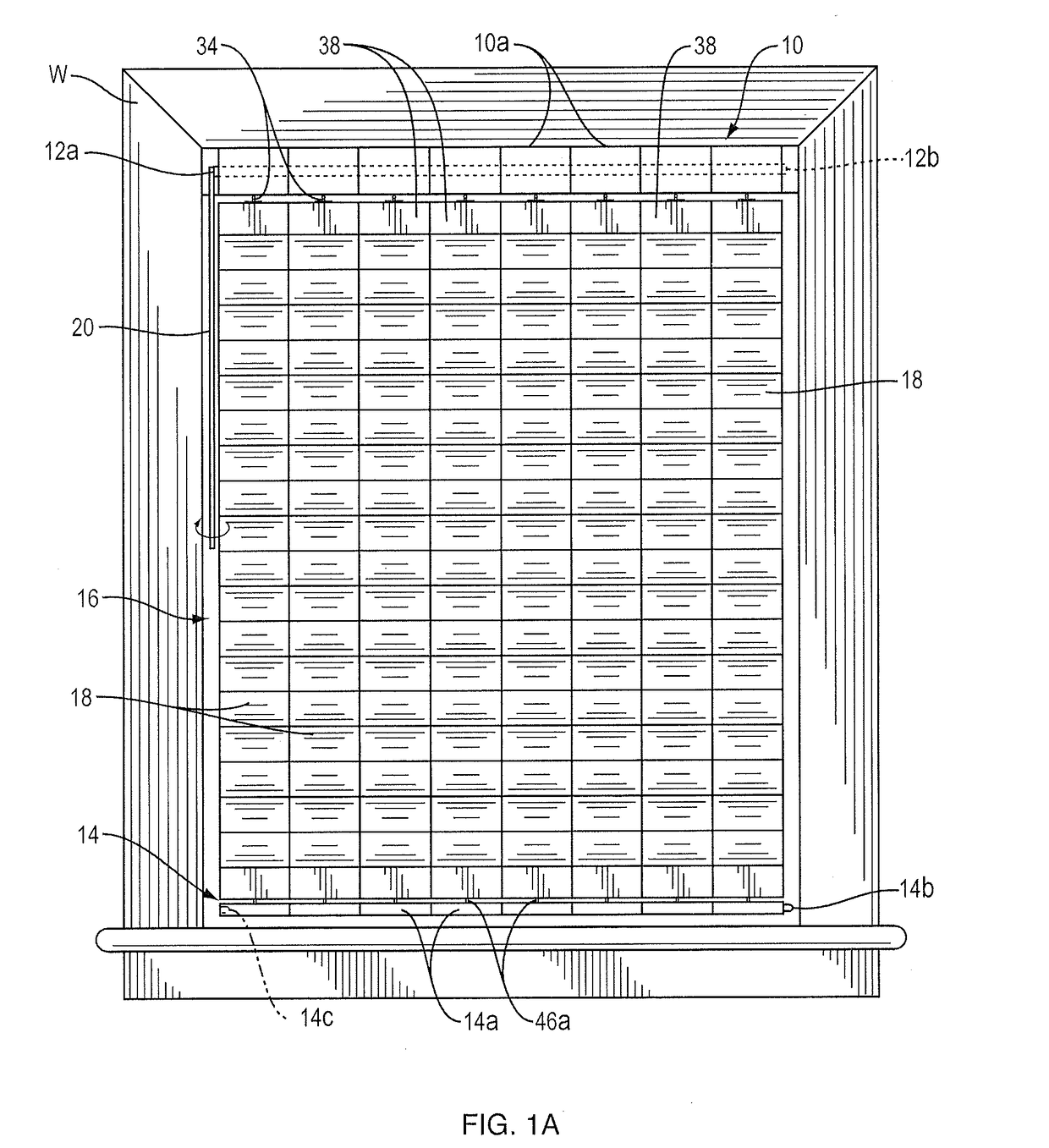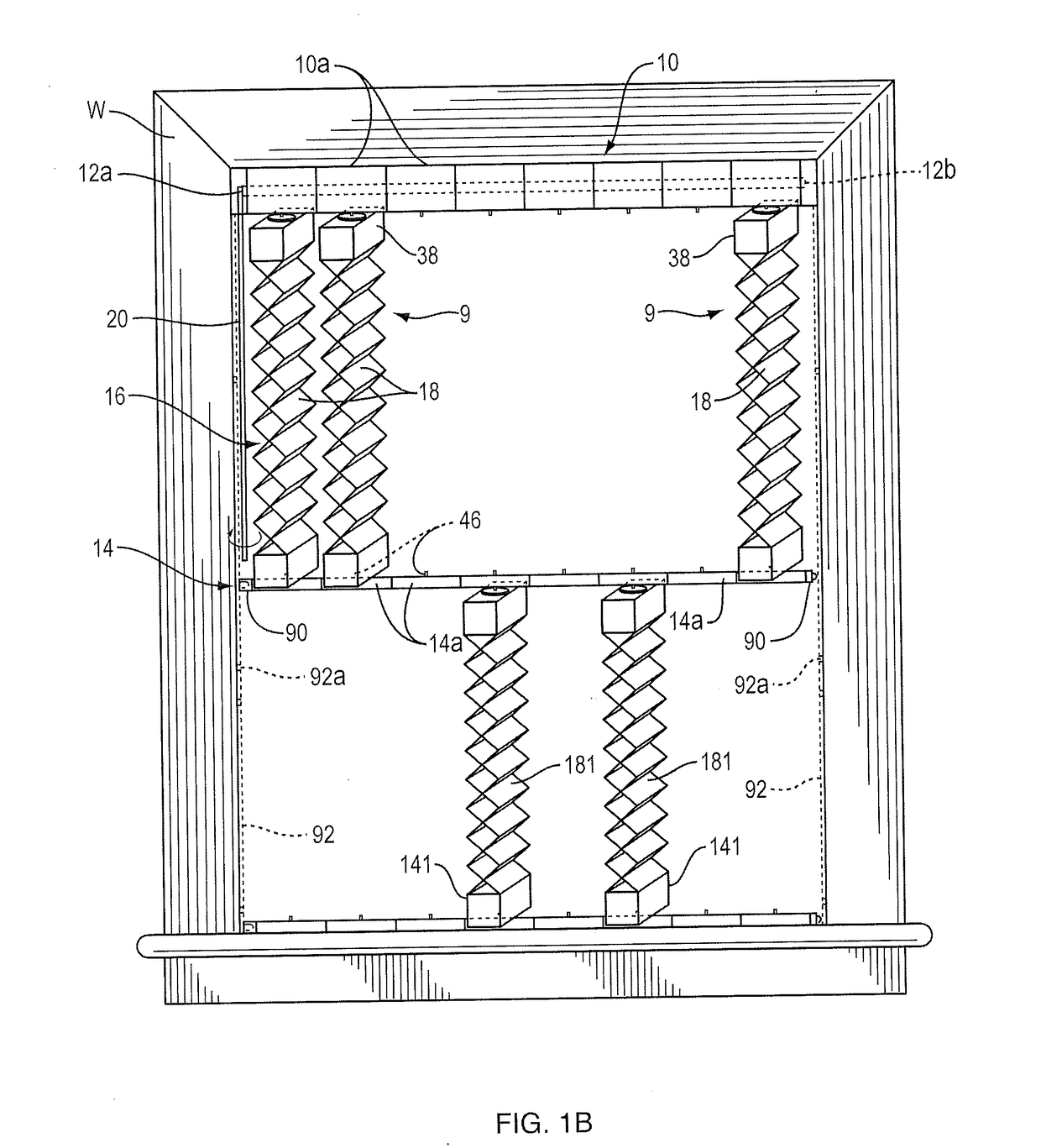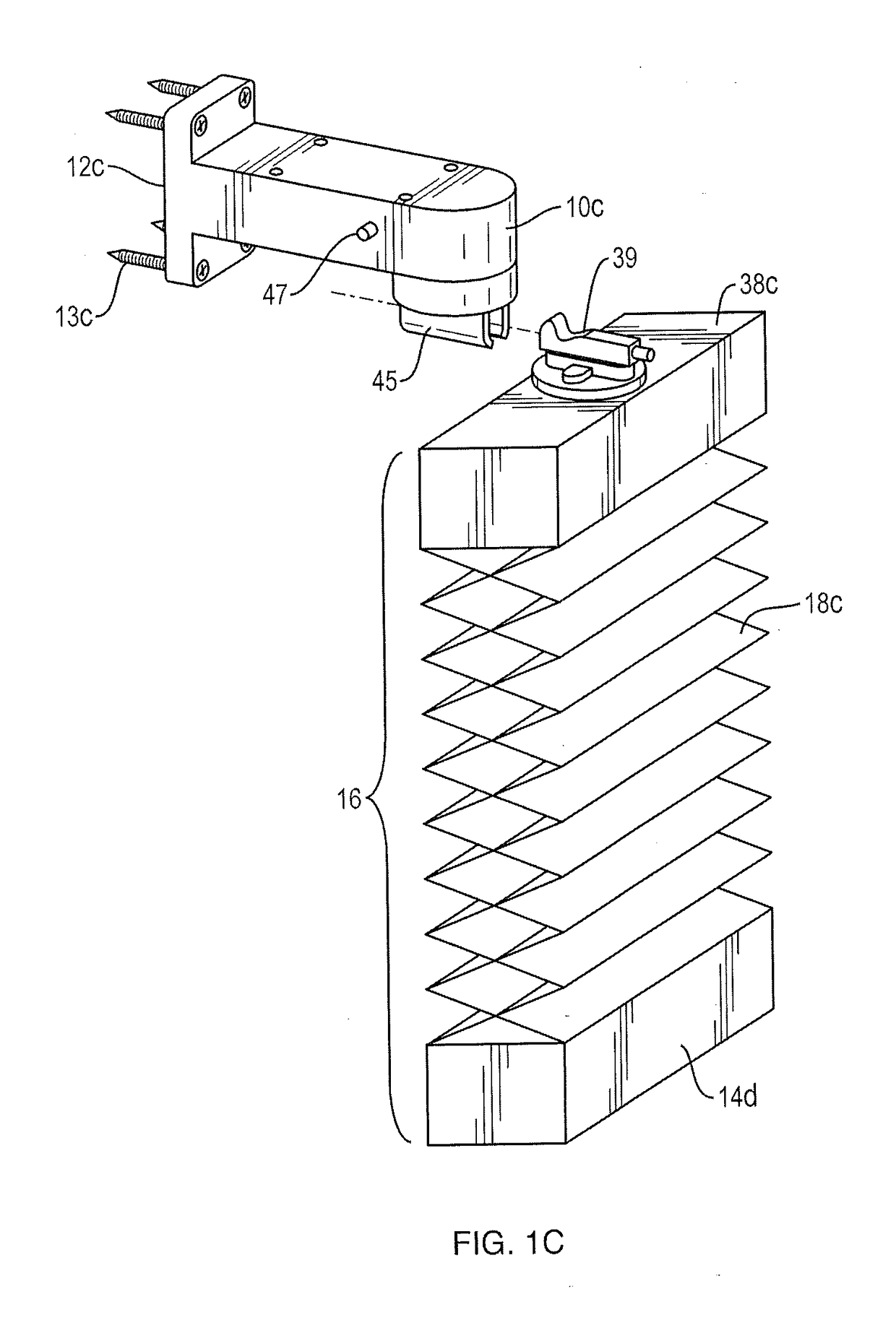Vertical blind assembly
- Summary
- Abstract
- Description
- Claims
- Application Information
AI Technical Summary
Benefits of technology
Problems solved by technology
Method used
Image
Examples
Embodiment Construction
[0095]As shown in FIGS. 1A and 1B, my vertical blind assembly comprises a head rail 10 mounted at the top of a window W by means of brackets 12a and 12b which support the opposite ends of the head rail. The assembly also includes a foot rail shown generally at 14, and extending between the head rail and the foot rail is a window blind 16 comprised of a plurality of vertical slats or louvers 18. By pulling down or lifting up the foot rail 14, the blind 16 may be moved from a fully extended or lowered position shown in FIG. 1A to a partially retracted or raised position shown in FIG. 1B and then to a fully raised or retracted position, not shown, wherein the foot rail 14 lies just under the head rail 10 so that the blind 16 does not obstruct the view through the window. Furthermore, by turning a wand 20 in one direction or the other, the slats 18 of blind 16 can be rotated about their vertical axes from a fully closed position as shown in FIG. 1A wherein the slats lie parallel to the ...
PUM
 Login to View More
Login to View More Abstract
Description
Claims
Application Information
 Login to View More
Login to View More - R&D
- Intellectual Property
- Life Sciences
- Materials
- Tech Scout
- Unparalleled Data Quality
- Higher Quality Content
- 60% Fewer Hallucinations
Browse by: Latest US Patents, China's latest patents, Technical Efficacy Thesaurus, Application Domain, Technology Topic, Popular Technical Reports.
© 2025 PatSnap. All rights reserved.Legal|Privacy policy|Modern Slavery Act Transparency Statement|Sitemap|About US| Contact US: help@patsnap.com



